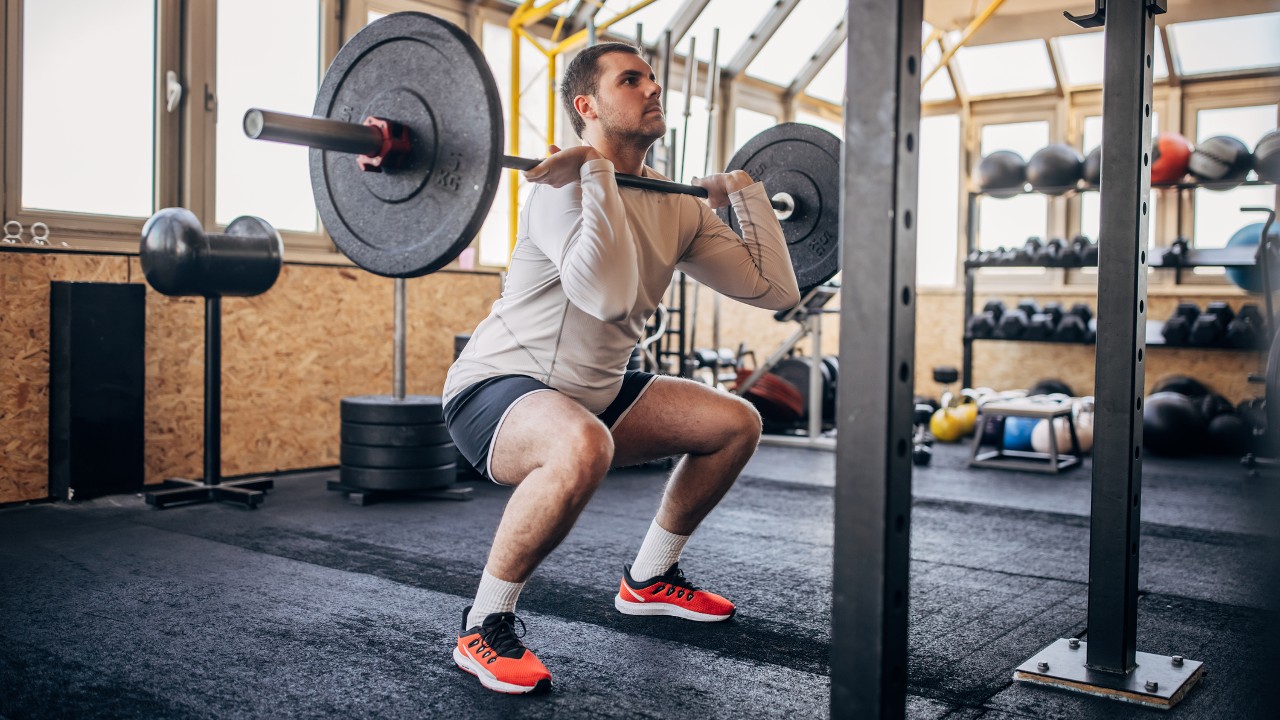Why Front Squats Are So Good
Start favouring the front-squat for increased size, strength and power, says top strength coach Charles Poliquin

The back squat is universally accepted as the single best exercise for total-body strength and has been rightly called ‘King of Exercises’. That said, when I’m asked the best way to assess an athlete’s lower-body strength, my answer is the front squat. And I have four good reasons.
1. It’s Harder To Cheat Your Form
First, the front squat is the most honest test for lower-body strength. It’s easier to cheat in the back squat, so the front squat provides a more objective interpretation of maximal strength levels. This is because if you try to cheat—by shooting the hips back upon the concentric contraction—you’re likely to drop the bar and you could seriously injure yourself. The incentive to be honest is very high in the front squat.
2. It Requires Impressive Flexibility
The second reason is that the front squat immediately accesses your flexibility, because you can’t perform the exercise properly unless your flexibility is good in all the major joints. When I give a strength test that requires flexibility, my athletes have a strong incentive to train for flexibility. This is particularly true for bench press addicts who have problems supporting the bar in the correct position on the top of the chest. If an athlete has tight forearms and external rotators of the shoulder, it will be hard to hold the bar. This deficiency can be corrected by learning proper technique.
3. It Places Less Stress On Your Knees
The third reason is based on sport science research. Electromyography (EMG) data suggests that the front squat is more effective than the back squat in activating the vastus lateralis (the largest muscle in the quads) and the rectus femoris (the middle muscle of the quads); also, biomechanical analysis indicates that the front squat places less compressive force on the knee. Put simply, front squats work the quads harder with less stress on the knees.
4. It’s A Strength Coach Favorite
Still not convinced? The fourth reason I value the front squat is that it is a favorite among strength coaches worldwide. In one survey of top European coaches who were asked what their three top strength exercises were, the consensus was the power snatch, the incline bench press and the front squat.
That’s because when comparing the front squat with the back squat, weightlifting coaches believe the front squat is more useful for improving your clean and power clean. This makes sense: the starting position of a front squat more closely approximates the start position of a clean because the trunk is more upright than in the back squat.
The back squat would be considered more specific to the snatch, because the wider grip forces the athlete to start with a back angle that is more parallel to the floor. And for a competitive weightlifter, the front squat will obviously help in recovering from the bottom ‘rack’ position of the clean.
As such, if an athlete’s power clean or clean is considered relatively weak compared with their other strength tests, it would be appropriate for that athlete to focus more on the front squat.
Form Tips
To perform the exercise, use a pronated (palms-down) grip as you would for a power clean. Squat until the hamstrings completely cover the gastrocnemius (upper calf) muscles. You should not be able to see daylight between the hamstrings and calf muscles. Keep the trunk upright, and push the elbows up and in.
One thing to remember when using front squats is never to exceed six reps per set. This is because your rhomboids tire isometrically before your quads do concentrically. You don’t want to get to a point where you’re squatting with a kyphotic (hump-backed) posture. That’s when accidents happen.
Get the Coach Newsletter
Sign up for workout ideas, training advice, reviews of the latest gear and more.
One of the world's premier strength coaches, Charles Poliquin has successfully trained professional athletes and Olympians worldwide. Poliquin writes a monthly column for Men's Fitness about how to train as effectively as possible.

